You are a craft hobbyist.
You are an artist.
You collect vintage pieces.
You have access to wholesale craft supplies.
If you answered yes to one or more of the above and you are looking to monetize your talent, design and/or access to supplies then Etsy is the ideal marketplace for you to start. It is a marketplace dedicated exclusively to:
- Artists
- Craftsmen (and women)
- Vintage collectors
- People with an art supply hook-up
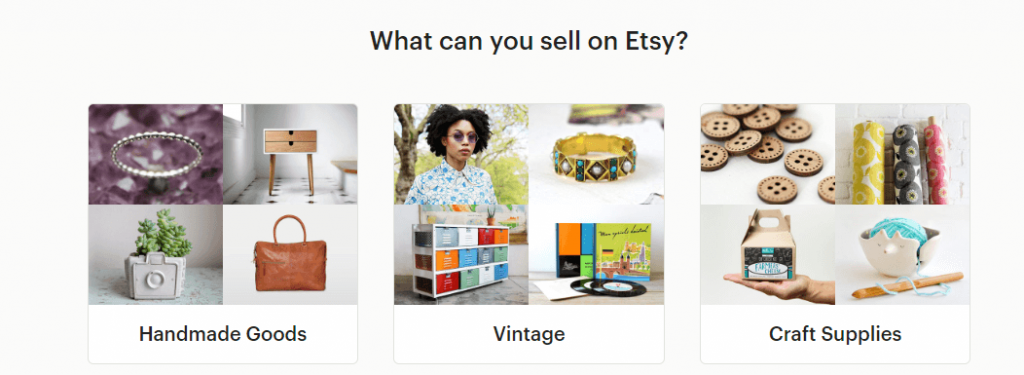
Their business model and approach juxtaposed with Amazon, for example, is quite different. For one Etsy does not try to compete with its sellers by selling its own name brand items. Second off, Etsy’s model is built off of having a large number of small retailers or to be more precise 2.1 million of them, instead of a handful of sharks having the rest of the fish fighting for the remaining 30% of business.
How Do You Know if Selling on Etsy is Right For You?
If you answer yes to some or all of the following, Etsy is for you:
- Do you want an easy way to get started selling your wares?
- Do you want to check the waters before investing in your business?
- Do you prefer a marketplace that drives traffic organically to your store?
If you answer yes to some or all of the following, Etsy may not be for you:
- Is building a custom user experience and design for your online store important to you?
- Is being in full control of your branding and product narrative paramount?
- Are you interested in intense sales efforts including up/cross-selling items (which may not meet Etsy’s guidelines)?
How to Create an Etsy Account and Listing in 8 Steps
1. First of all, you will need to register for Etsy – do this by clicking ‘Register’ at the top right hand of Etsy’s homepage:

Enter your name, email and desired password and hit register:
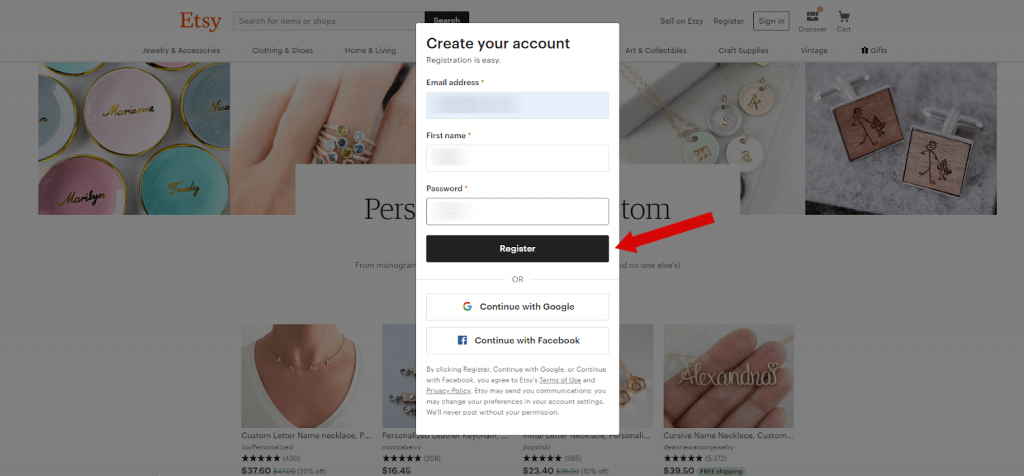
2. Now let’s create a shop by clicking ‘sell on Etsy’ at the top left of your screen:
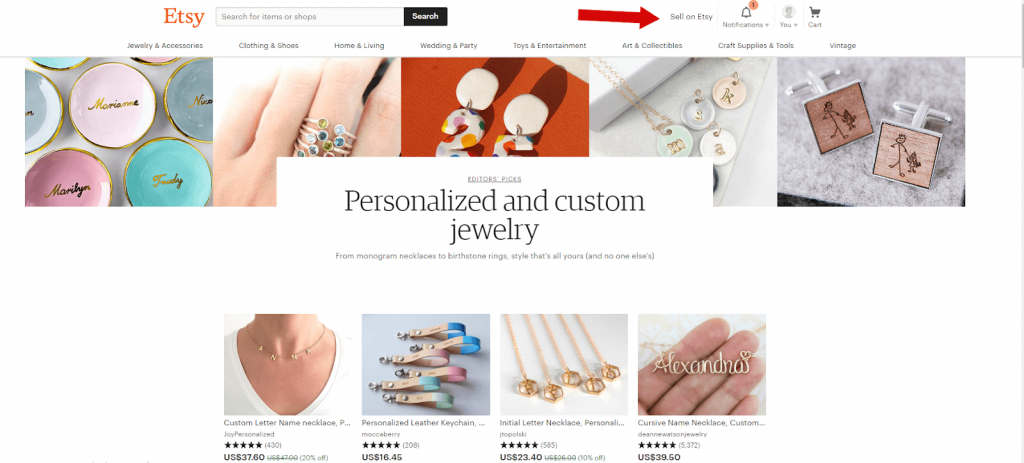
Once you do this, you will be redirected to the following screen:
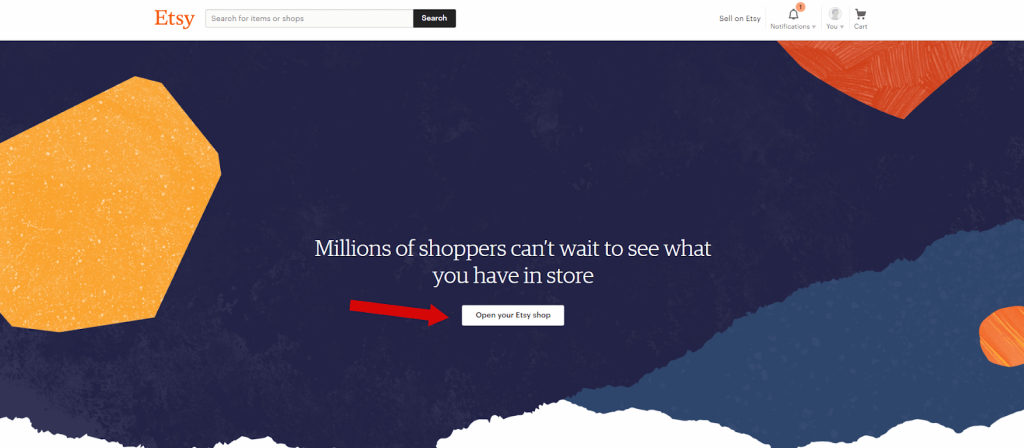
Click ‘Open your Etsy shop’.
3. Now let’s set up your preferences. You will need to choose:
- Shop language
- Shop Country
- Shop currency
- How involved you are or want to be as an Etsy merchant

These are important so that Etsy can place your shop in the correct target markets – for example, Etsy’s algorithm may show your shop higher in American shopper’s search results over their French counterparts.
4. Now you need to give your shop a name. I recommend really taking a second to think about this one as your shop name is an integral part of your brand and will influence your future brand narrative and marketing efforts. Once you have chosen your name, click ‘check availability’ and if you get a green checkmark you

are good to go. I chose ‘RecklessArtist’ which was to my delight and surprise not yet taken:
5. It’s time to add your ‘inventory’ even though I hate this word. Especially as artists, we aren’t selling iPhone covers for example – we are selling artwork. At any rate, Etsy recommends you start off by adding at least 10 items so that you increase your chances of being discovered by potential customers. For this post’s sake, I will add just the one. Go ahead and click ‘add a new listing’:
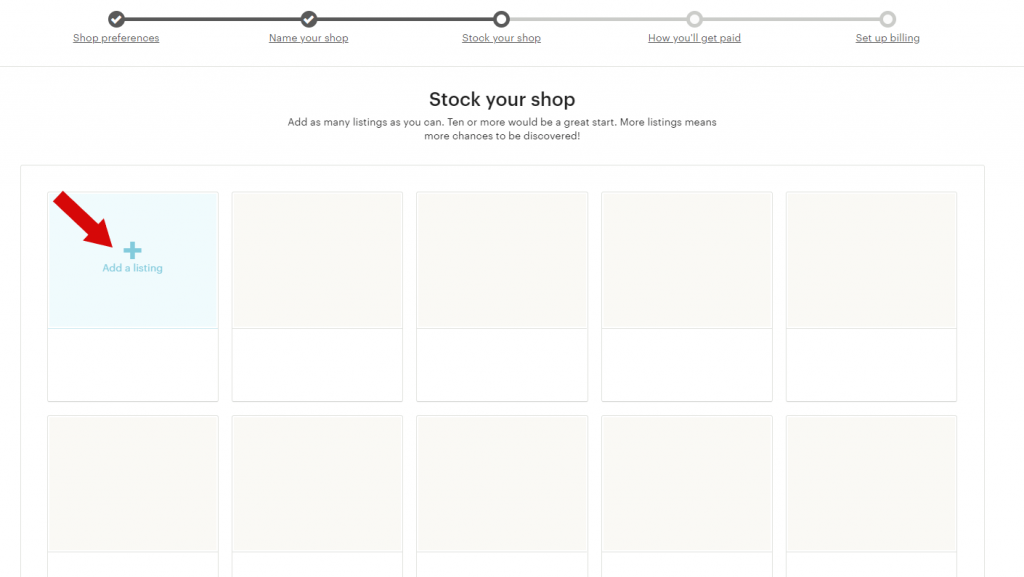
Now add a photo. Etsy recommends these best practices:
- Use all 10 photos to really show off your item and its details.
- Show pictures of different item variations for example if it comes in multiple colors.
- Show the item in context, for example, a painting in a living room.
- Use a common item to show scale, for example, show a coffee mug next to a statuette.
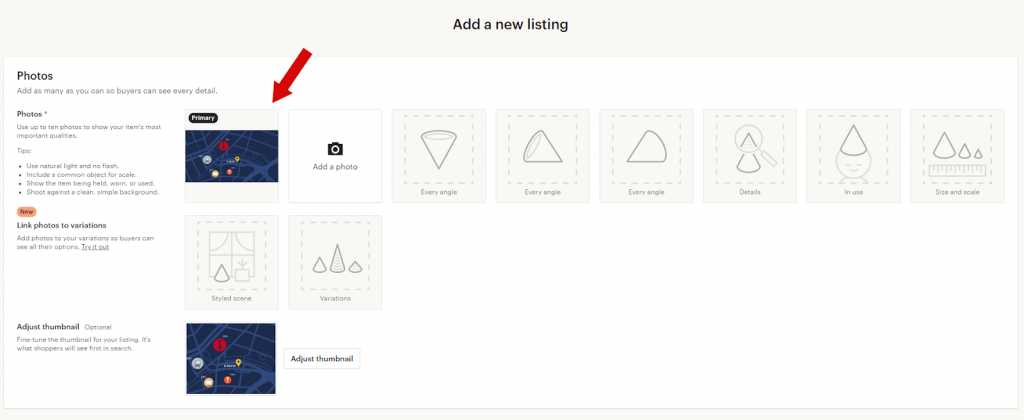
Scroll down on the same page and start filling out the ‘listing details’ which include:
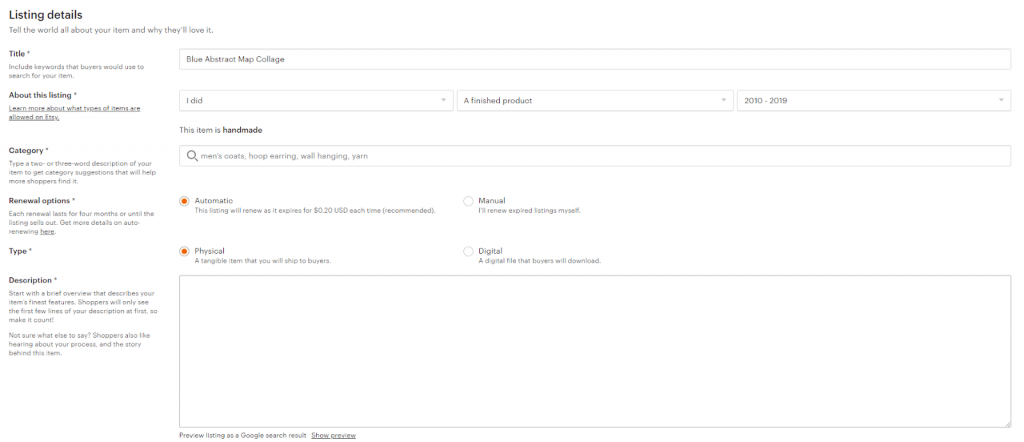
- Creating the perfect title – I chose ‘Blue Abstract Map Collage’ for my title trying to keep in mind what keywords a potential consumer might use in their search query.
- Letting the buyer know who made the item, when they made it and whether or not it is a finished product or a tool of creation. I wrote that I made this Item and that it is a finished product created between 2010-2019.
- Renewal options – you have to choose between ‘automatic’ or ‘manual’. Each time you renew a listing, it lasts 4 months. The automatic option will cost you $0.20 and I recommend you choose this option lest you forget to renew in 4 months time.
- Type – meaning are you selling a physical item or a digital file. I chose ‘Physical’.
- Description – You want to write a short, descriptive description which is both enticing yet informative. The first sentence or two is most important as this is what shoppers will see in your listing thumbnail which appears in search results. Here is an example of a well-written description of an item I found on Etsy:
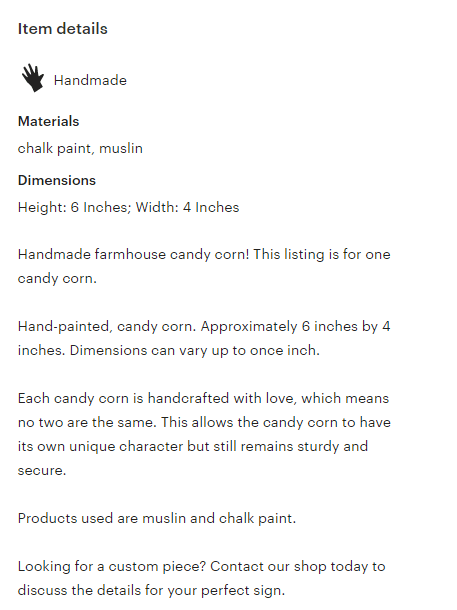
- Production partners – Only fill this out if you collaborate with others when creating your items.
- Section – Choose a relevant section to help shoppers search based on category such as maps, jewelry, men’s clothing etc…
- Tags – You get 13 tags on Etsy. I recommend you use all 13 in order to increase your chances of findability. Think how would a potential buyer look for my item. Maybe using color (red), Shape (oval) or function (vase).
- Materials – Let shoppers know what the item is made of. For certain people and designers looking for a one-off piece, they may be specifically be searching for something made of concrete or wrought iron.
6. Remaining on the same page and simply scrolling down – you can now fill out inventory and pricing:

- Here you need to choose the item price including all your expenses. Etsy also recommends you factor in shipping. Consider quickly browsing your direct competition to get an idea of how you should price your pieces.
- Quantity – It may be one of a kind or maybe you are selling a few reproductions. Fill this out so Etsy can automatically renew listings till they are completely sold out.
- SKU -This is for your own internal use and tracking and will not be displayed on the buyer’s end.
- Variations – If your item comes in multiple colors this will be displayed and buyers can choose which version they want during the checkout process.
- Personalization – Tick this box if you offer item personalization such as embroidering a name on a pillow.
7. Keep scrolling down to the shipping section:
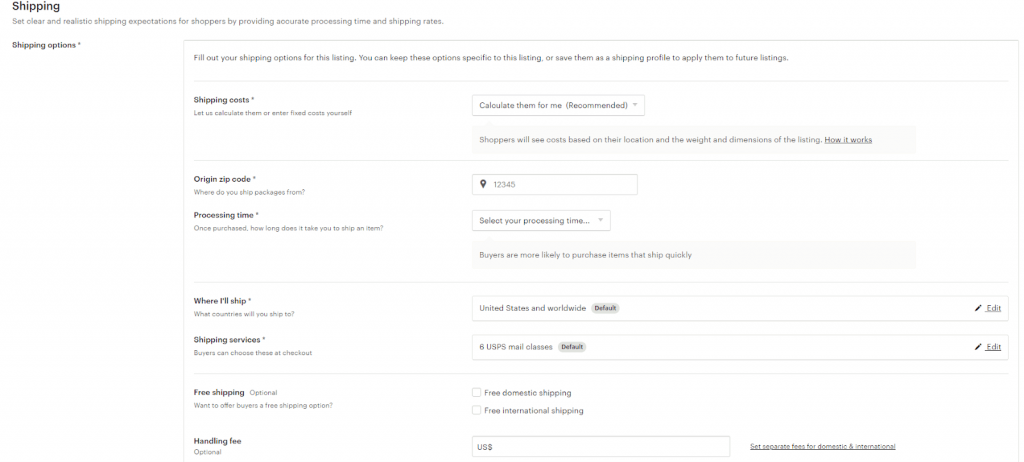
I highly recommend you use this tool to help you determine shipping costs and factor those into the price and then tick the free shipping box here. It is psychological and highly effective that consumers prefer buying from sellers who provide ‘free shipping’.
Now click ‘Save and continue’:
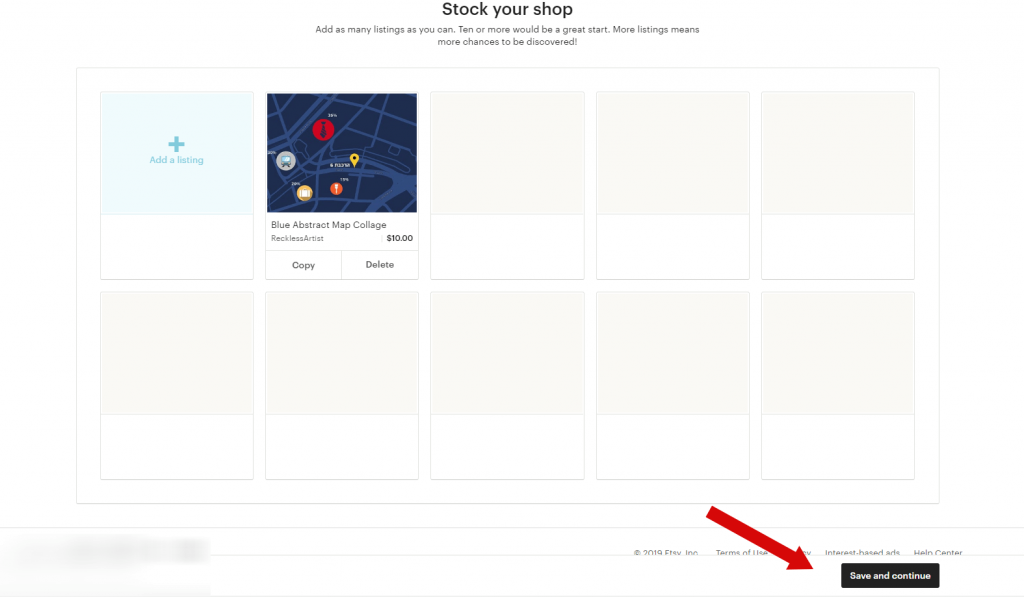
You will now move to the ‘how you’ll get paid’ section and ‘set up billing’ sections which I will not fill out this point since I do not want Etsy to have my personal information at this point though rest assured it is 100% secure from what I have heard and read.
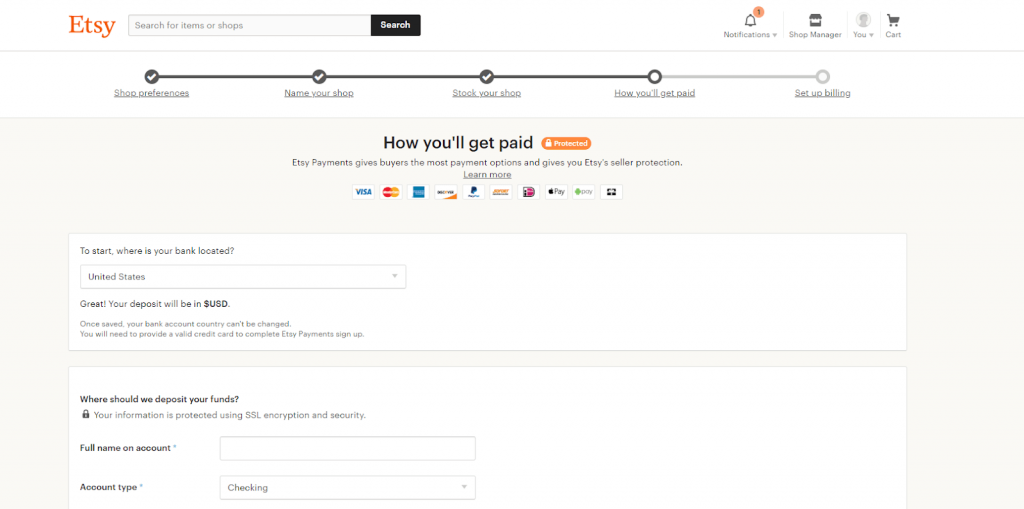
I am text block. Click edit button to change this text. Lorem ipsum dolor sit amet, consectetur adipiscing elit. Ut elit tellus, luctus nec ullamcorper mattis, pulvinar dapibus leo.
You will need to tell Etsy:
- Where your bank is located
- Where the funds should be deposited
- Date of birth
- Last four digits of your Social Security number
- Home address
- Phone number
Congratulations your Etsy account, shop, and first listing are all live!
Cost of Selling on Etsy
In order to get a complete and comprehensive idea of Etsy’s fees head over to the Finance section of their site.
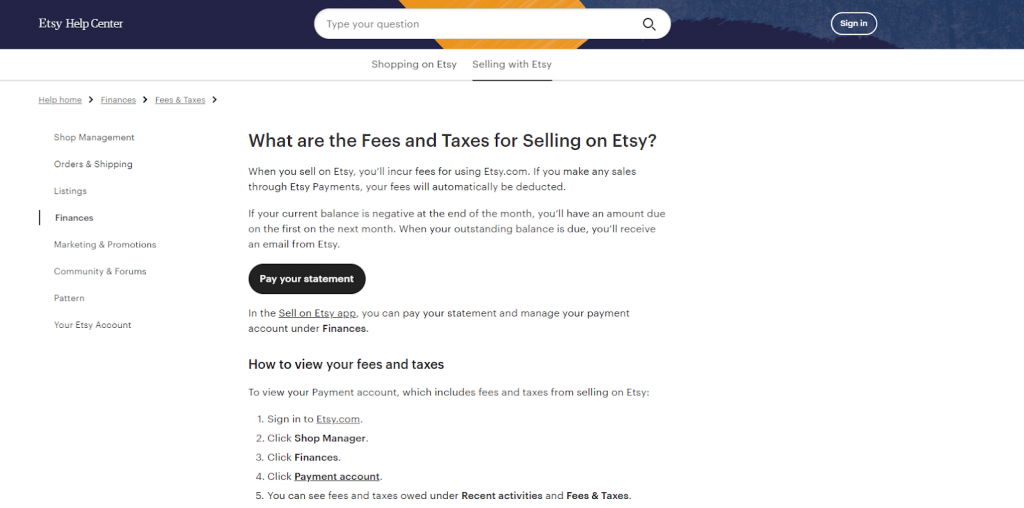
Selling on Etsy is of course not free and as such you will incur fees every time you sell an item. Here a list of all Etsy’s fees:
- Listing fees – Etsy has kept this pretty darn simple in that they charge a flat $0.20 fee for every listing type and renewal they offer.
- Shipping label fees – You do not have to use Etsy’s shipping labels but most sellers attest to saving money when doing this. As far as Etsy is concerned you can write your own labels or take it to the post office – they are just offering a service of convenience, it is entirely up to you.

3. Transaction fees – There are three types:
- Shipping transaction – Etsy will charge you 5% of the shipping cost listed for your item.
- Transaction – Etsy will charge you 5% of the total cost of your item (not including shipping as that is charged separately). Here is an example which clearly illustrates this:
- Square manual – If you sell an item physically using ‘Square’, you will pay a flat $0.20 per transaction. In case you don’t already know, ‘Square’ is a payment service which enables people to buy, sell and transfer funds using an Android or IOS mobile device.
4. VAT – As with shipping labels, this number varies, in this case, based on geographical location. In New York, for example, the VAT or Value Added Tax is currently 8.5% (but varies based on many factors) while in California it is a flat 7.25%.
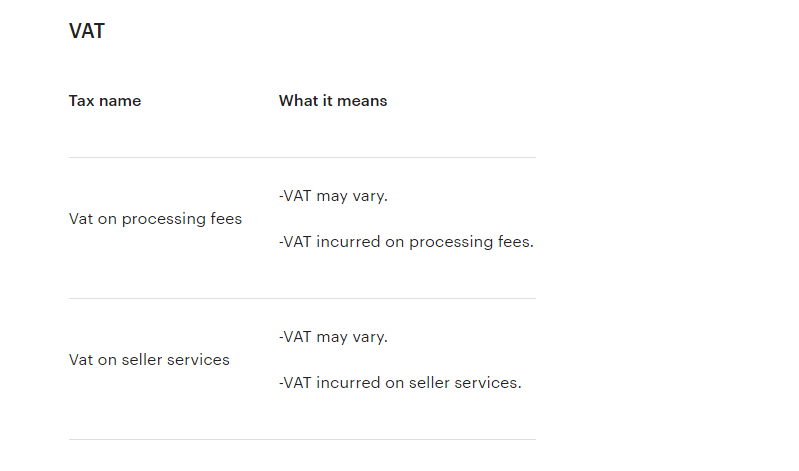
5. Other fees –
- Etsy payment processing fees – This only applies to sellers who use Etsy Payments and is charged based on the geographical location of your bank (3-4% usually, check out the link for the full chart).
- Deposit currency conversion – This is a 2.5% fee when you list an item for sale in a currency which is different than the default currency in your bank account. For example, selling an item in Swiss Franks (CHF) when your HSBC account is in US Dollars (USD).
The Average cost of selling on Etsy
Here is an example of what a typical Etsy listing can cost you from start to finish. The example uses a $100 piece of art as a reference:
- Listing fee = $0.20
- Shipping label fee = The shipping label itself is free, btu the shipping itself is what costs money depending on the size, weight, parcel origin as well as parcel destination. Check out this precise explanation I found on marketingartfullly:
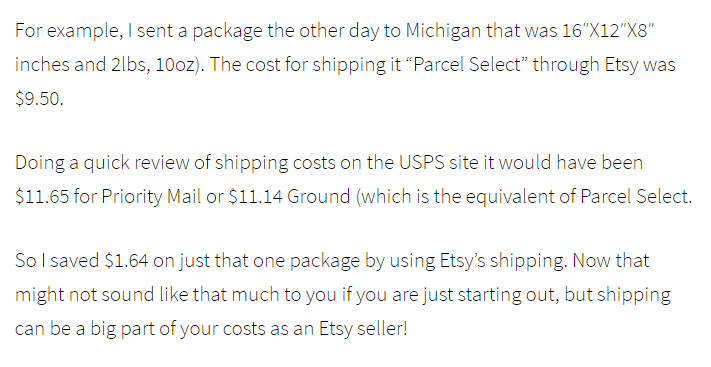
- Shipping Transaction fee = 5% of $9.50 is $0.475.
- Transaction fee = 5% of $100 is $5
The subtotal fees in this example is $0.20 + $0.475 + $5.00 = $ 5.675
*Remember that you have to pay VAT when applicable.
5 Important Tips for Etsy Rookies
Now that you know how to set up your Etsy account, here are some important tips for when you are just getting started:
- Use social proof – Social proof is uber important on marketplaces but especially on Etsy. If someone buys an item on eBay, it is usually mass-produced and even if the seller is slow on shipping and handling in a worst-case scenario, if the item manufacturer is reputable you know the item will ‘work’. On Etsy, shoppers are typically buying from individual artists and craftsmen and as such need to feel comfortable that the quality of their work will be up to par. That is why it is extremely important to follow up with customers post-purchase, ensure that they are happy and ask them to leave you feedback.
Seller tip – Offer shoppers an incentive such as a discount on their next purchase if they send in a picture of themselves using your item or post it on social media and tag you and your business.

2. Use Automatic Ads – Set up a promoted listing campaign to help promote certain listings that you really want to get exposure. I know that most artists are not born business people and many of them believe that their art should speak for itself. But unfortunately, we don’t live in a utopian world and listings do need to be promoted which can have a huge impact on reaching new audiences.
Seller tip – I recommend swallowing your artistic pride and trying to promote different listings, offering different promotions, changing up images and prices and see which convert best.
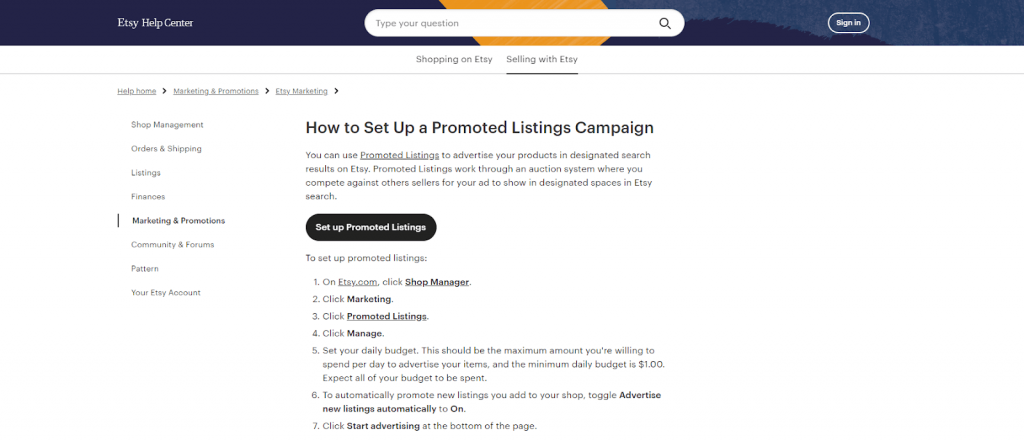
3. Employ this simple SEO hack – Every internet-based marketplace runs on a search algorithm such as eBay’s Cassini and Amazon’s A9. This is true of Esty as well and this algorithm is responsible for placing your listing in search results and we all know the higher up in search your listing appears, the better the chance of making a sale. One of the most important things in this regard on Etsy is renewing your listings as the algorithm wants to show shoppers the newest items first. When you make a sale on Etsy the listing renews automatically which helps Etsy promote items based on user preference. But what if you haven’t generated a sale this week?
Seller tip – Manually renew select listings which you want to promote at $1.00 per renewal.
4. Know who your target market is – It is great that you make art and crafts but now that you are selling these items you are in effect a small business and as such you need to make your best effort to understand what type of person would be interested in buying what you are peddling. In the following example, Company A is targeting way to broad an audience ie ‘Women on Etsy between age 20 and 60’ Whereas Company B has really done their homework and wiedeled out a niche for themselves ie ‘Married women on Etsy between age 25 and 35 with a college degree and thinking about having kids’.
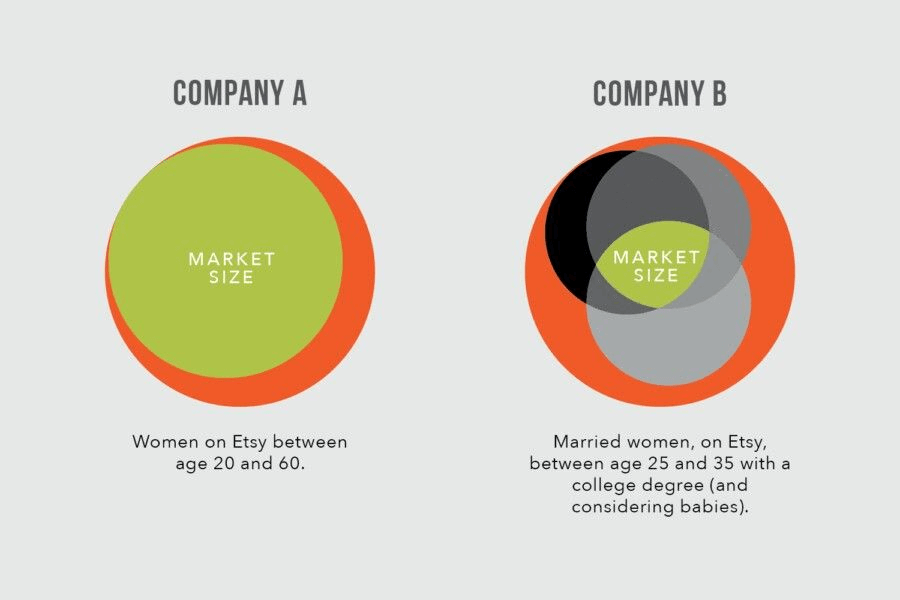
Seller tip – Here are a few ways to help you define your target market on Etsy:
- Decide intuitively what type of person would be interested in your item and who to avoid. For example – baby toys are perfect for new mothers and fathers but not perfect for single people.
- What need does your item fill? Maybe it is a hand-crafted baby toy that helps children develop their motor skills. In which case you may be targeting, wealthy, highly neurotic mothers with their first child.
- If you open a social media account for your Etsy business then this can be a great way to prove your above assumptions or to hone them and ensure they are more accurate. For example what if you think you are targeting women between the ages of 25 and 25 but actually most of your followers on your shop’s Instagram account are single fathers?
- Use Google Analytics to understand your viewing and shopping demographic by going to Audience > Demographics.
- Create a short post-purchase survey and incentivize customers with a discount or freebie to fill it out.
- Look at your competition either on Etsy or big companies and try to discern their audience from their social media accounts, Google analytics, comments etc… That is why you are supposed to keep your enemies closer, so that you can learn from them and ‘borrow’ data from them.
5. It’s all about quality, not price – Let’s face it, nobody can compete with the Chinese on Price! So don’t even try. That is not giving up, it is just accepting your weaknesses for what they are. Now that that’s out of the way, ask yourself: ‘What are my strengths?’:
- Do I produce super unique one of a kind pieces ?
- Am I a well-know artist whose name precedes him?
- Do I use special materials like gold leaf which can set me apart?
Basically, anything unique about yourself which you can use as leverage thereby subconsciously justifying the higher cost of your product. In this instance, reviews, social media posts and any other form of ‘social proof’ can help you your sales reach to consumers who are willing to pay for quality.
Over to You
Any artist or craftsman should try selling on Etsy once. I myself used to paint and draw as a hobby and I thought I would try my luck on Etsy. Unfortunately, I never did make a sale but it was a fun process and I truly believe that in life, if you don’t try you will never know! Also, setting up an Etsy shop is pretty easy and free so you can always take a few hours on a lazy Sunday morning to get the ball rolling. I will say this, however, and this is something which is true in terms of Etsy as well as other eCommerce marketplaces – there is no such thing as magic! You cannot just set up shop and expect the sales to roll in so if you are serious about your Etsy success, try and implement a few of my tips above. With that in mind – keep drawing, painting, sculpting or whatever it is you do and I truly hope you become the next Etsy sensation – just don’t forget your humble beginnings 🙂
As always thanks for reading.
In the comments below: What has been your # ONE challenge setting up shop on Etsy?


